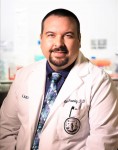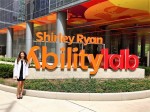Adult Stem Cells Save Woman Ravaged by Lupus, Now She Can be a Mom – LifeNews.com
Today the Charlotte Lozier Institute announced the release of its latest testimonial video at StemCellResearchFacts.org, a project of the Washington, D.C.-based research and policy group. The video revisits Jackie Stollfus, a lupus survivor whose story was first told in a video released in 2014.
Diagnosed at the age of 21 with systemic lupus, an autoimmune disease with no known cure, Stollfus endured years of debilitating symptoms that did not respond to medication before undergoing a transplant of her own bone marrow stem cells. Seven years later, she is healthy, active, and has been able to start a family. Adult stem cells saved my life, gave me a chance to have a life, gave me that chance to be a mom, she says.
Dr. David Prentice, Vice President and Research Director of the Charlotte Lozier Institute and an international expert on stem cells, hailed the new video, saying:
Follow LifeNews.com on Instagram for pro-life pictures.
Autoimmune diseases are notoriously challenging to treat, which makes Jackie Stollfuss recovery that much more striking. As this video shows, adult stem cells are the gold standard for stem cells when it comes to patient-centered science. Jackies story is only the latest example of innovation using adult stem cells. These non-controversial cells have led to validated healing in FDA-approved studies and peer-reviewed publications for patients with various diseases and conditions. Derived from bone marrow, umbilical cord blood, and other ethical sources, they have already been used to help over one million suffering patients around the globe.
Charlotte Lozier Institute President Chuck Donovan praised Congressional efforts to prioritize NIH funding for the most promising research:
The initial successes for these innovative therapies must be followed up with expanded resources to bring more treatments to the clinic and the bedside. The bipartisan, aptly-named Patients First Act (H.R. 2918) introduced by Rep. Jim Banks and Rep. Dan Lipinski is a good example of how policymakers can advance cutting-edge medicine. It directs resources for stem cells where they will do the most good for patients.
StemCellResearchFacts.org, a project of the Charlotte Lozier Institute, was established in 2009 to facilitate and form a worldwide community dedicated to helping individuals, patients and families discover, learn and share the latest advances in adult stem cell research. To that end, the website has published 16 video testimonials backed by peer-reviewed published science. These testimonials feature patients who have undergone successful therapies for a variety of conditions including autoimmune diseases, cancer, spinal cord injury, heart disease, and more using adult stem cells. They also convey the testimony of doctors and researchers on the merits of these treatments.
See the original post:
Adult Stem Cells Save Woman Ravaged by Lupus, Now She Can be a Mom - LifeNews.com


